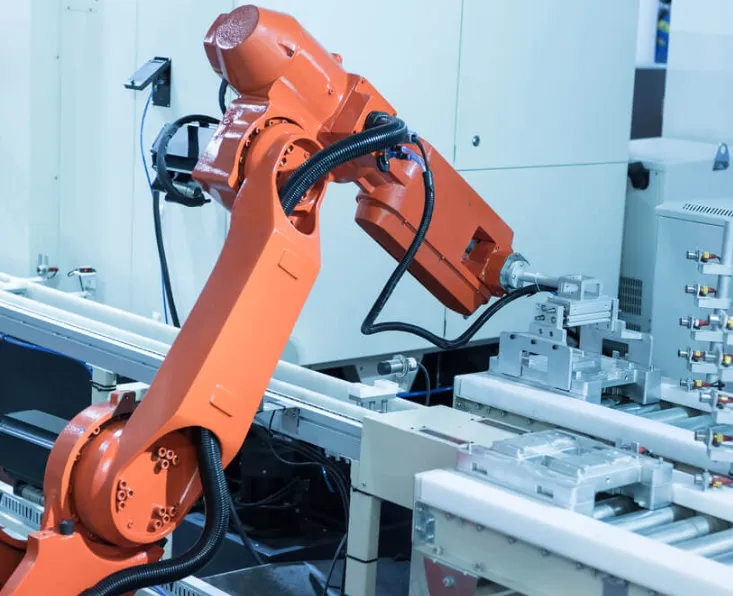The terms robotics and automation are often used as if they mean the same thing, but in reality, they refer to two distinct technologies. Both have reshaped modern industries, particularly manufacturing, where they reduce labor costs, improve efficiency, and take on dangerous or monotonous tasks once handled by people. To fully leverage their potential, it’s important to understand what sets them apart and how they complement each other.
What Is Automation?
Automation refers to the use of technology—whether software, machines, or other systems—to perform tasks with minimal or no human input. It can be applied to both digital and physical processes. On the simpler end of the spectrum, a programmable thermostat is a form of automation. At the more advanced level, complex manufacturing processes rely on automated systems that may incorporate artificial intelligence or machine learning to make decisions and adapt to conditions.
There are three main categories of automation:
- Software Automation – Uses programs to handle repetitive digital tasks. These “bots” can fill forms, process transactions, or manage routine back-office functions.
- Robotic Process Automation (RPA) – A specialized form of software automation that mimics human interactions with digital systems. Enhanced with AI, RPA can follow rules, process data, and streamline workflows.
- Industrial Automation – Relies on machines and equipment to manage physical operations, such as CNC machining, automated inspections, or assembly lines.
What Is Robotics?
Robotics is a field that blends engineering, computer science, and design to create programmable machines capable of performing specific tasks. Unlike many forms of automation, robots interact with the physical environment, using sensors, actuators, and control systems to function.
Robots generally fall into three categories:
- Manual robots – Operated entirely by humans.
- Semi-autonomous robots – Capable of performing certain actions independently but still need human oversight.
- Fully autonomous robots – Designed to work with minimal human involvement, making decisions based on real-world inputs.
In industrial settings, robots are widely used for welding, material handling, assembly, and precision tasks that require accuracy beyond human ability. Because they are reprogrammable, robots offer greater flexibility compared to machines designed for a single purpose.
How They Differ—and Why It Matters
Automation is about systems that perform repetitive processes, while robotics is about machines that physically execute tasks. The two often overlap, particularly in manufacturing, where robots are powered by automation software to handle complex operations efficiently.
Robots bring unique advantages to the table:
- They can run 24/7 without fatigue.
- They perform with higher accuracy than human workers.
- They reduce health and safety risks in hazardous environments.
- They handle parts too small or intricate for human hands.
On the other hand, software automation and RPA offer benefits in non-physical processes:
- Freeing employees from tedious digital work.
- Lowering operational costs.
- Enhancing compliance and governance by strictly following rules.
- Scaling quickly by replicating bots for multiple workflows.
- Improving security by minimizing human error.
The key distinction is that automation is not always robotics, but robotics almost always incorporates some form of automation.
When Robotics and Automation Work Together
When combined, robotics and automation can create highly efficient systems. Collaborative robots (or “cobots”) are one example, designed to work safely alongside humans while following automated instructions. This partnership allows manufacturers to improve output, cut downtime, and make better use of skilled labor.
That said, integrating both technologies comes with challenges. High upfront investment, difficulties in connecting multiple systems, and unexpected costs during prototyping can slow adoption. Without the right planning, businesses risk spending more on implementation than they save.
To overcome these obstacles, advanced robotics software plays a vital role. It enables teams to collaborate seamlessly, design customized solutions, and test digital models before committing to physical prototypes. With the right tools, companies can reduce errors, shorten development cycles, and achieve a faster return on investment.
Final Thoughts
Automation and robotics are distinct yet interconnected technologies that continue to reshape industries. Automation focuses on streamlining processes—whether digital or physical—while robotics applies engineering and programming to build machines that bring automation to life in the physical world. Understanding the difference not only prevents confusion but also helps businesses deploy both technologies strategically, achieving greater efficiency, safety, and competitiveness in today’s fast-changing landscape.







